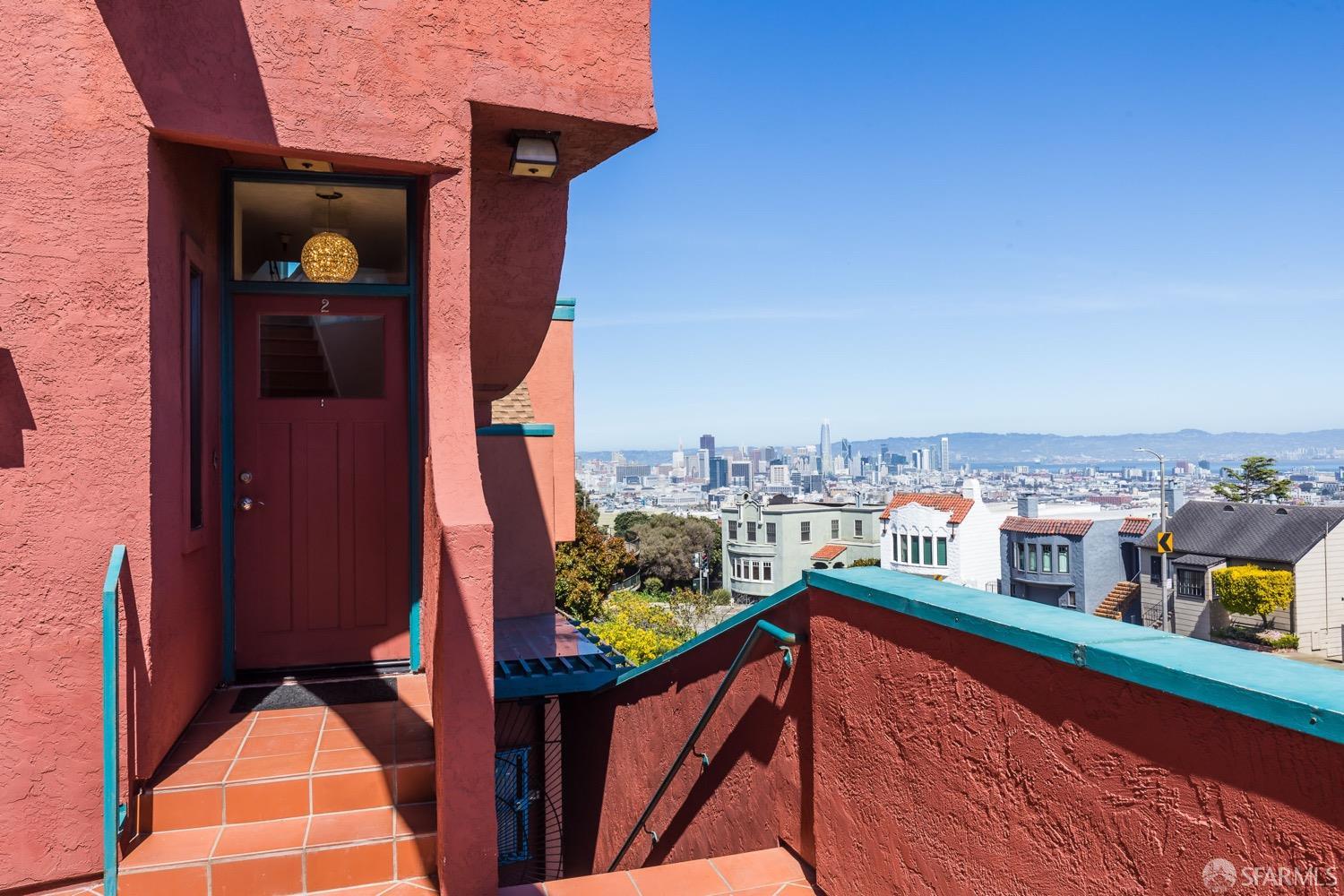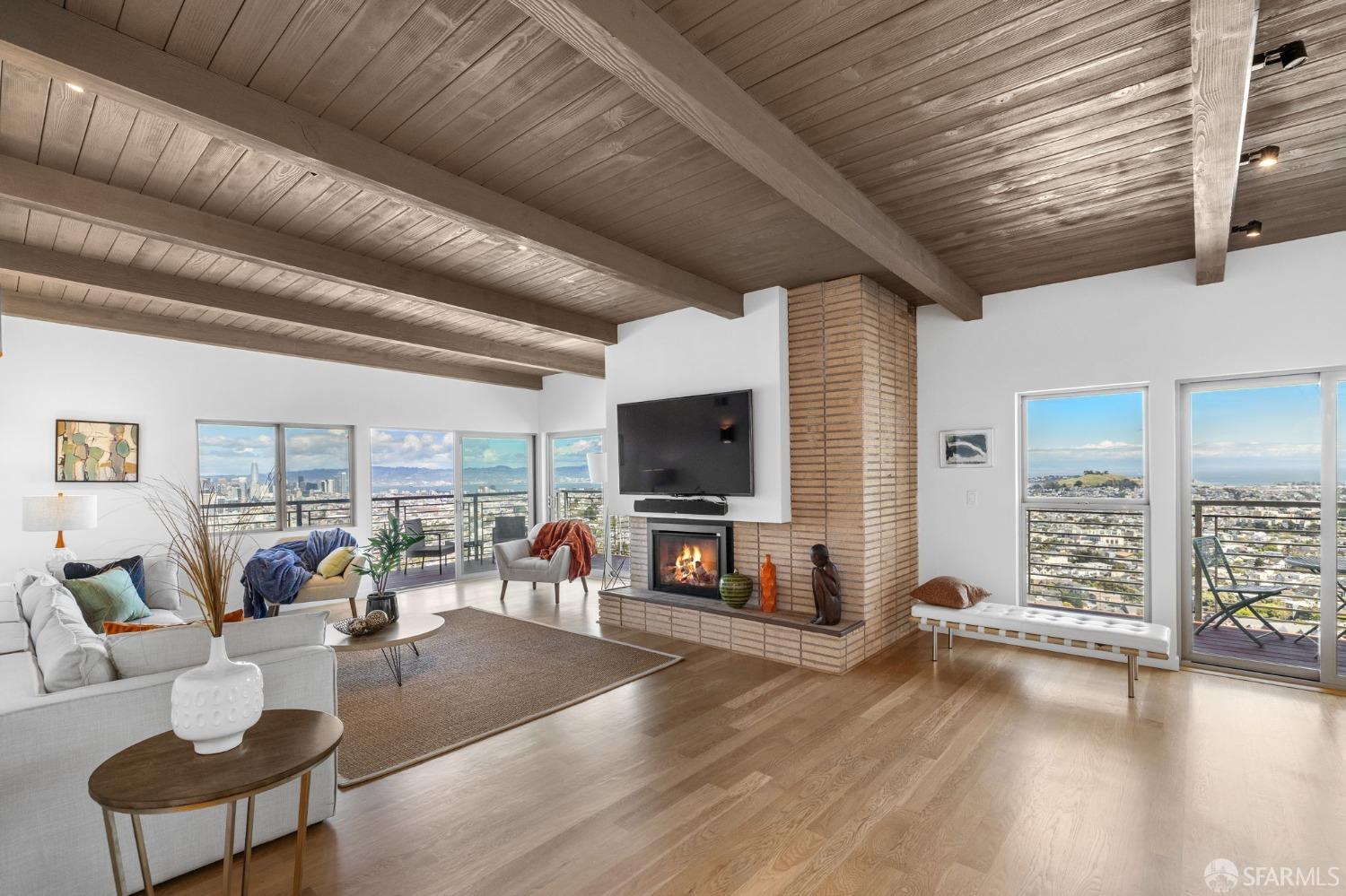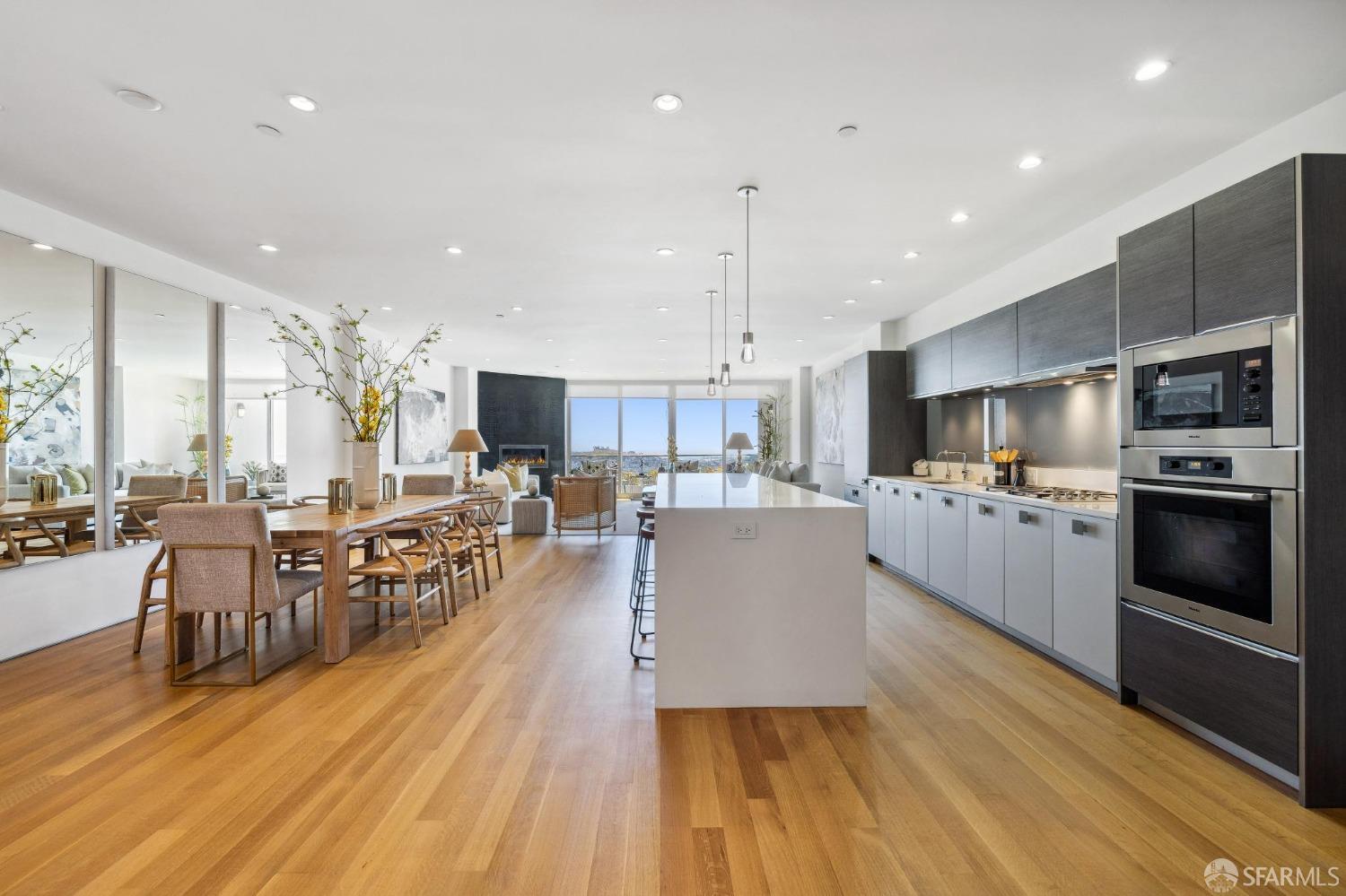TWIN PEAKS
A quiet neighborhood perched above the city, Twin Peaks has one sight on display: San Francisco. Boasting 360º panoramic views of the Bay and the Pacific Ocean, it’s certainly worth the quick ride up the hill on the curving streets that wind alongside some of the city’s priciest, yet remarkably unstriking, homes. Thanks to television, the Peaks now boast the city’s most prominent landmark: a massive, oddly stylish antenna tower that can be seen from throughout the city and from airplanes on thick San Francisco days, when it pokes up through the highest peaks of downy white fog.
According to Native American mythology, the Peaks were created when a married couple argued so violently that the Great Spirit separated them with a clap of thunder. Spanish explorers had a more corporeal inspiration for naming them “Breasts of an Indian Girl,” but Americans eventually settled on the current literal name. From these lofty heights in 1905, architect Daniel Burnham worked on his plans for the city, which he intended to sculpt into broad thoroughfares. Despite the opportunity offered by the earthquake and fire of the following year, commercially minded civic authorities lacked the vision to carry it out, and the ideas were largely forgotten, except for his plans for the Civic Center.
To get to the peaks by car, continue uphill on Market Street from the Castro till it turns into Portola, then turn right on Twin Peaks Boulevard. If you’re on foot, you can take the #37 bus part way, though you’re still left with a significant climb. Be warned: the peaks are a major tour-bus destination and it’s not unusual to encounter throngs of photographers lining the pinnacle. A good option for avoiding the rabble lies just downhill, where the small promontory of Tank Hill, at the end of Belgrave Avenue just off Seventeenth Street, offers equally impressive views, though on foggy days you should avoid the area entirely, unless you enjoy playing hide-and-seek in cold, damp fog.


